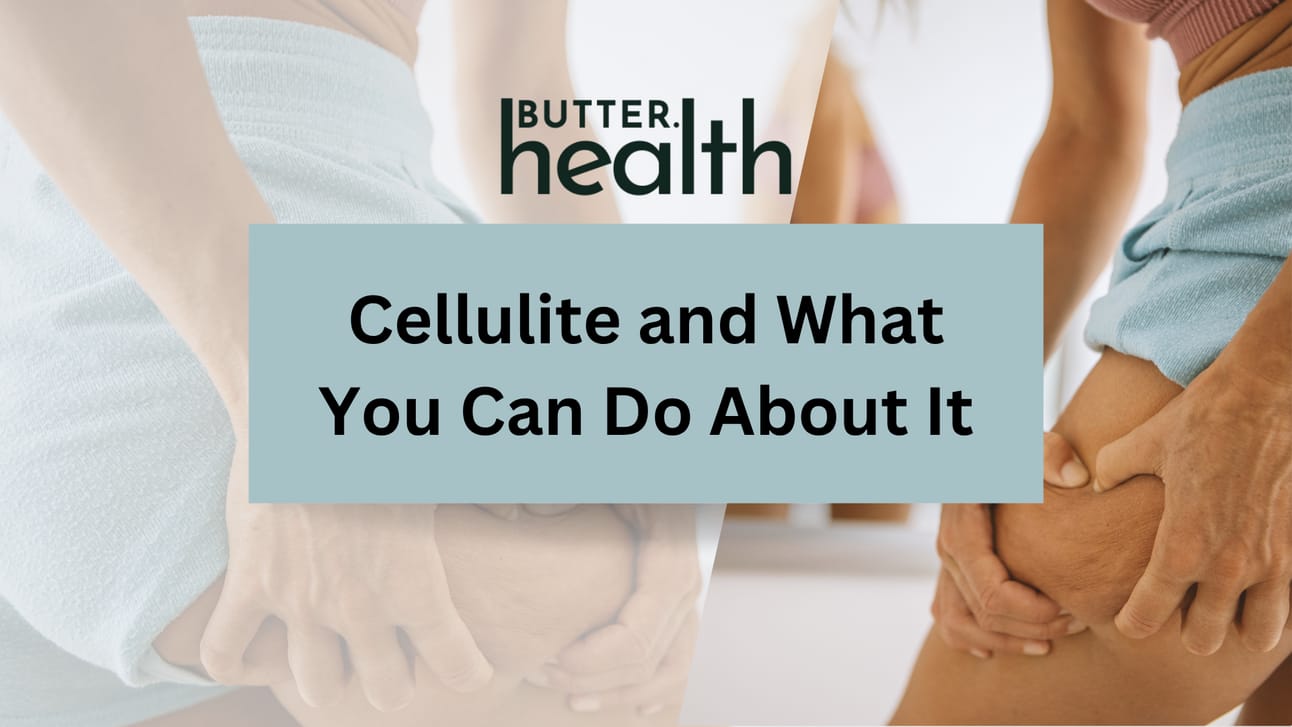- Butter Health
- Posts
- Cellulite and What Can You Do About It
Cellulite and What Can You Do About It
So, what is cellulite, really?

Temperatures are up and the amount of clothing people are wearing is down, so we’re seeing a lot more of it this time of year: dimples on thighs, ripples on butts, little puckers on hips. Cellulite is completely normal, but that doesn’t stop people from wanting to understand it — or minimize it.
So, what is cellulite, really? Is it just fat? Genetics? Bad luck? And can you actually do anything about it? Let’s break it down.
🔍 What Causes Cellulite?
Cellulite is a structural issue under your skin. It’s not just about how much fat you have — it’s about how your fat, connective tissue, and skin interact.
Here’s what’s happening:
Fat cells push up. When fat cells get bigger (from weight gain, hormones, or inflammation), they press against the skin.
Connective cords pull down. Under your skin, you have fibrous bands (called septae) that anchor your skin to deeper tissue. These don’t stretch much.
Result? That push-pull tension creates the bumpy, dimpled look we call cellulite.
🧬 Why Women Get It More
Hormones — especially estrogen — play a huge role. Estrogen drives fat storage in the thighs and hips and affects collagen production and blood flow, which influence skin structure.
Genetics matter too. Some people naturally have:
Thinner skin
Weaker connective tissue
More stubborn fat deposits
If your mom and grandma had cellulite, chances are you will too—but that doesn’t mean there aren’t things you can do to minimize it! Your genes aren’t static. Through a process called epigenetics, your everyday behaviors act like switches, turning genes on or off. This means your lifestyle choices directly influence how your body functions at a cellular level.
🫧 Other Factors That Make Cellulite Worse
Beyond hormones and genetics, other factors include:
✅ Inflammation and Water Retention — A diet high in processed foods, sugar, or seed oils can lead to more swelling and fluid buildup in tissue.
✅ Poor Circulation—Sitting for long periods or not moving enough causes sluggish blood and lymph flow, which can cause fluid and toxins to get stuck in tissues.
✅ Loss of Collagen—Age, stress, smoking, and nutrient-poor diets break down collagen, making skin thinner and looser and cellulite more obvious.
🏃♀️ Can You Get Rid of Cellulite?
Total honesty? You probably can’t erase it completely. But you can improve how it looks by strengthening what’s under your skin and supporting your connective tissue.
Here’s what actually helps:
✔️ Build Muscle
Strength training tightens and tones the tissue underneath your skin. Muscle acts like a smoother base layer. Think squats, lunges, deadlifts — lift heavy!
✔️ Eat to Support Collagen
Collagen keeps your skin firm. Eat:
Protein — collagen is protein!
Vitamin C — critical for collagen synthesis (think bell peppers, citrus, broccoli)
Zinc and copper — found in shellfish, nuts, seeds
Bone broth or collagen peptides — not magic, but they can help.
✔️ Reduce Inflammation
Ditch ultra-processed foods, seed oils, excess sugar, and alcohol. These drive inflammation that weakens connective tissue. Add in omega-3 fats (wild fish, pastured eggs), antioxidant-rich veggies, and plenty of water.
✔️ Move Your Body
More daily movement = better circulation and lymph flow. Walking, rebounding (mini trampolines), dry brushing, and even massage can help drain fluid.
✔️ Mind the Hormones
Balanced hormones help keep fat storage and tissue healthy. If your estrogen is out of whack, you might see more cellulite. Prioritize sleep, manage stress, and keep blood sugar steady — these all help.
💡 It All Adds Up
Cellulite isn’t a flaw — it’s just part of how our bodies store fat. About 90% of women have it. It’s normal!
But you don’t have to feel stuck with it either. Support your body from the inside out:
Strengthen muscle
Eat for healthy skin
Move more
Reduce inflammation
It all adds up — and your whole body will thank you.
✨ Ready to build a body you feel good in — cellulite and all? Let’s talk.
Reply